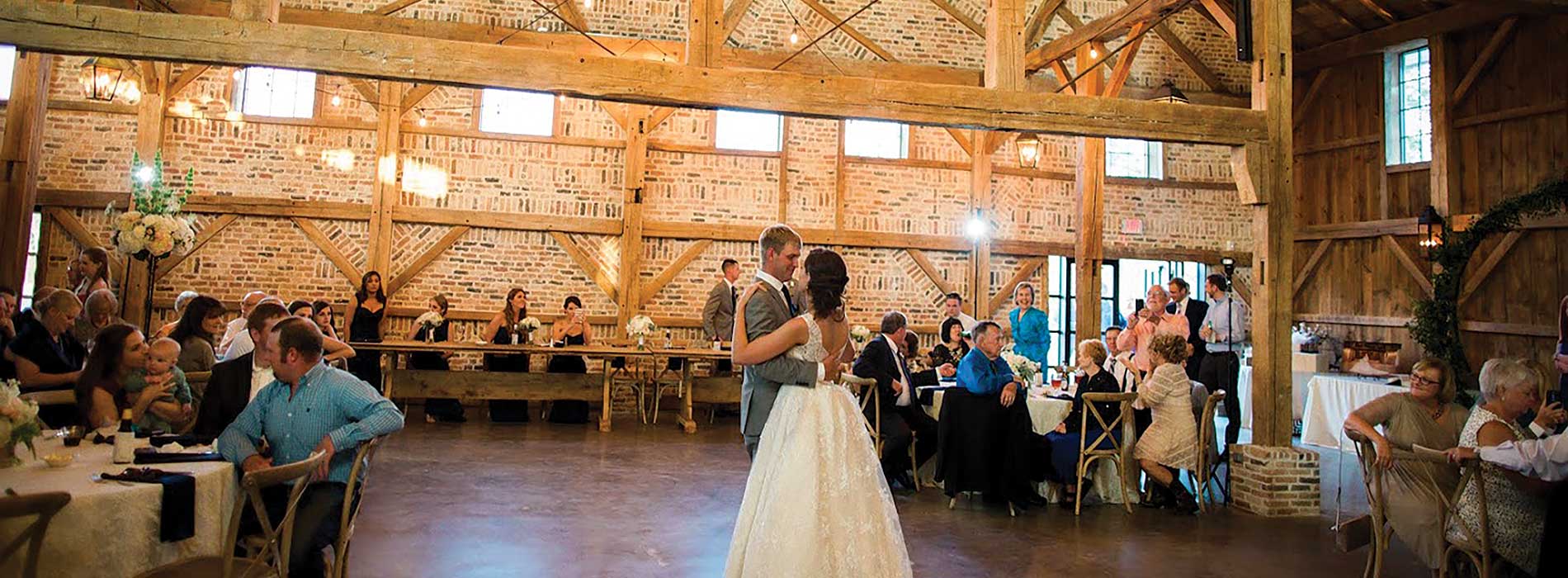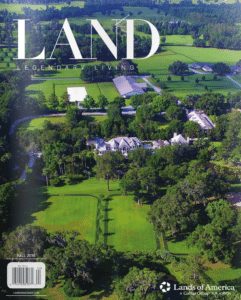
Donald Polaski, owner of the Antique Barn Company based in Orford, New Hampshire, has dedicated his career to giving historic buildings new life.
“My entire career has been dedicated to restoring old buildings,” said Polaski, who co-founded the company with his late business partner and mentor Bruce Lowe, Jr. in 1997. “These days I concentrate on barns.”
The antique barns have been restored and repurposed to create one-of-a-kind homes, event venues and farm stand retreats.
“Every project is an opportunity for an antique barn to have a second chance in life,” said Polaski, who credits his fondness for the old farm buildings and their associated history to his upbringing in rural New England.
“Northern New England has retained much of its charm because the people have conserved many of the older homes, buildings and barns,” Polaski said. “As a result, history lines the streets and dots the countryside.”

Polaski and his highly skilled team of craftsmen specialize in the art of preserving timber frame structures, using traditional compound joinery. They focus their efforts on barns built between 1680–1880 across the United States and Canada.
“I buy barns that the current owners can’t maintain or would soon be lost to development,” Polaski said. “The Antique Barn Company saves and restores barns that would otherwise be lost.”
The oldest barn the team has restored dates back to 1699 and served as the stables for a popular Massachusetts tavern that was a favorite hotspot of pre-Revolutionary War colonists. During the Revolution, officers slept in the tavern and soldiers slept in the barn.
The original owner’s grandson, Ebenezer Sproat, was an officer in the Continental Army who because of his successful leadership achieved the rank of colonel. After the Revolutionary War, he was asked to go to Ohio to help ease hostilities with the Native Americans. The Native Americans grew to trust and respect Sproat, who had very prominent, bulging eyes. The natives nicknamed him “Buckeye,” which some historians credit as the origins of Ohio’s moniker, “The Buckeye State.”
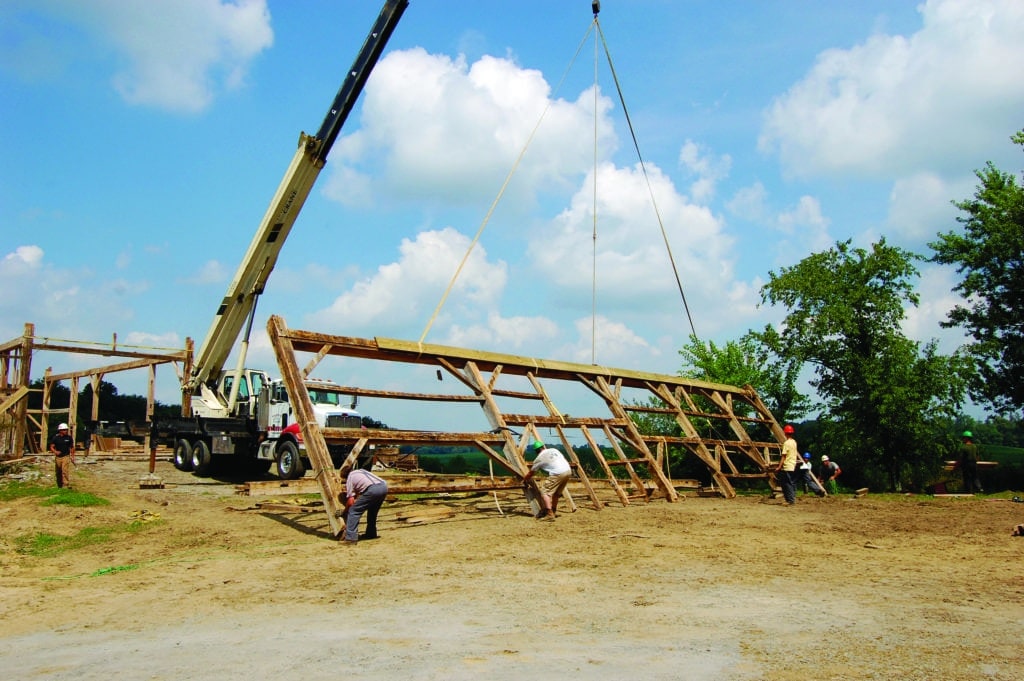
After the Revolutionary War, Benjamin Franklin was a frequent guest at the tavern as he made his rounds promoting The Farmer’s Almanac, teaching early settlers how to read in addition to helping them determine the best time to plant their crops.[pullquote type=”right”]“Every project is an opportunity for an antique barn to have a second chance in life.”[/pullquote]
“I try to gather as much history as possible about each barn, so its story is passed along to the new owners,” Polaski said. In addition, Polaski completes hand-drawn plans of the original frame, which are destined for the Smithsonian, so a record of the early construction methods remains.
Recently, the Antique Barn team restored what is believed to be the widest timber-frame barn ever built in North America. The “double-canted queen post” roof system allowed the Ohio barn to span a width of 60 feet without roof failure. The 60-feet hand-hewn oak tie beams used to span the barn’s width are incredibly rare.
“In my career, I’ve seen a few 50-foot timbers, but never 60-foot,” Polaski said. “I think it’s probably the biggest timber-frame barn built in North America.” It now serves as the centerpiece of Beckendorff Farms, a wedding and events venue in Katy, Texas.
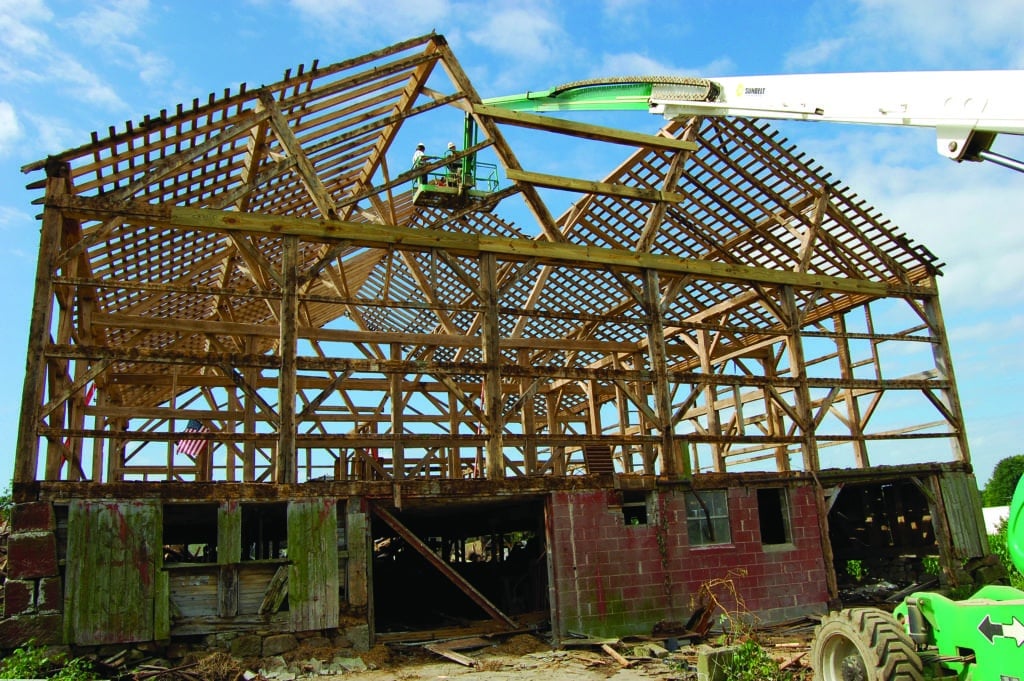
The craftsmen have also restored rare true round barns, New World Dutch barns, forebay barns, monitor barns, bull beam barns and a Sweitzer Barn.
“I travel extensively throughout Canada, New York, Pennsylvania, Indiana, Ohio and New England searching for barns suitable for restoration,” Polaski said. “I don’t take too many barns from any one area of the country because they are important components of the local landscape and the local history.”
When Polaski finds a suitable barn, he purchases it and it becomes part of the company’s online inventory. Clients can see the extensive collection online at AntiqueBarns.net. The barns are classified as standard, premium and exclusive rare, depending on their size, age and style. The Antique Barn Company will also restore existing barns that clients have on their properties.
“The work we do comes from the skill in our hands and the respect in our hearts,” said Polaski, who is a member of the Timber Framers Guild.
Once clients select a barn, the team travels to the site and dismantles it, carefully tagging each piece for authentic reassembly. Then, the barn is transported to the Antique Barn Company’s workshop where the frame undergoes a full restoration. All of the barn materials are protected under a black tarp which blocks the sun and other elements, ensuring the rich, natural patina wood is maintained. The crew makes necessary repairs and completes the restoration crafting replacement pegs and joinery using wood from the barn itself, so the work is “invisible.”
“The structural engineer we work with exclusively did his master’s and doctoral theses on mortar and tenon joinery and has 40 years experience working with and evaluating timber frames,” Polaski said. “He gives his professional stamp of approval to each and every project. Of course, he is representative of the expertise and professionalism we bring to this field.”
Once the restoration is complete, the team transports the barn to the new site, which the owners have prepared for building in collaboration with the Antique Barn Team. The team erects the timber frame.
On average, the process from start to finish takes four-to-six weeks, excluding finish work.

“We concentrate on the repair and restoration of timber frames, so we turn over the finish work to local contractors selected by the clients,” Polaski said. “While we have the skills to complete the finish work, we don’t have time because there are more barns to save.”
There is an urgency to the work. The march of time and progress is taking its toll on these early icons of American history. Polaski estimates that a majority of the barns could be gone from the landscape in the next 10 years. For instance, Indiana is considered the capital of true round barns and at one time had almost 1,200. Today, there are approximately 90 remaining.
Farm outbuildings began disappearing in the 1930s when taxes were assessed on every single structure on a property.
“Initially, farms had 15–20 buildings ranging from barns to chicken coops and ice houses,” Polaski said. “When the tax bills increased, farmers began destroying the smaller buildings. Generally, the large barns, if they were in use, were saved.”
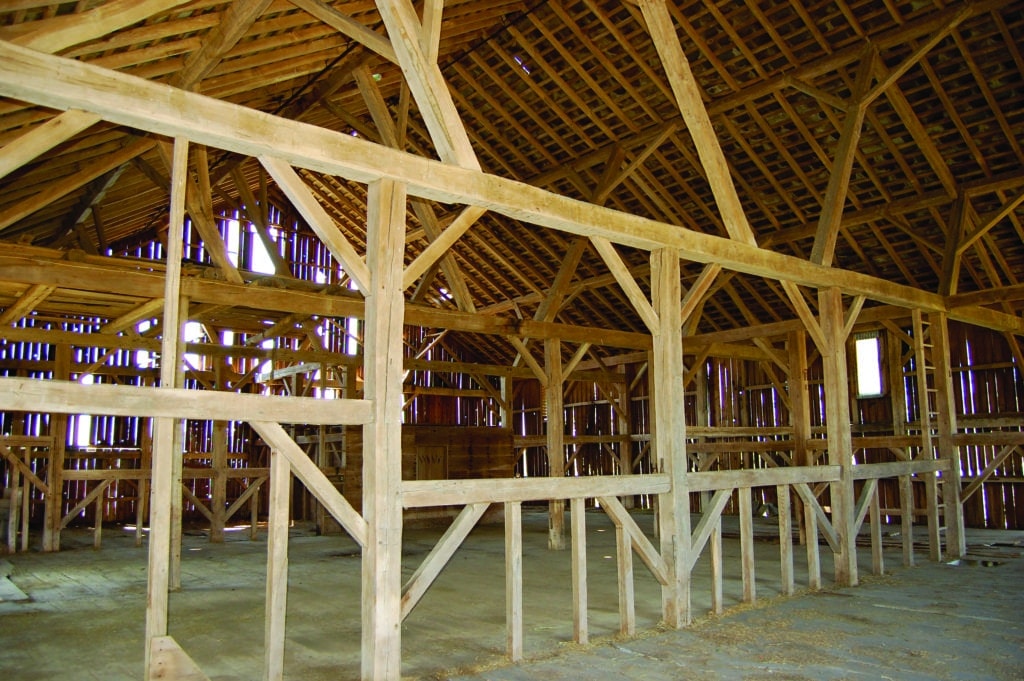
But agriculture continued to change and the old structures are not well-suited to modern farming.
“They were designed to store loose hay and livestock feed through the winter and were occasionally used to store lightweight farm equipment such as wooden farm wagons,” Polaski said. “Today’s modern farm equipment is just too heavy for the old barns to bear.”
Today, most active farming operations use metal pole barns that provide easy ingress and egress and protect the heavy equipment from the weather.
“The old barns are beautiful, but the expense of upkeep is often a luxury that tight agricultural budgets can’t support or justify, so they fall into disrepair,” Polaski said.
In addition, the massive timbers hewn from old growth North American forests have become popular salvage items. Companies have sprung up that specialize in dismantling the barns and re-milling the timbers into flooring. Polaski likens these companies to vultures preying on the historic relics.
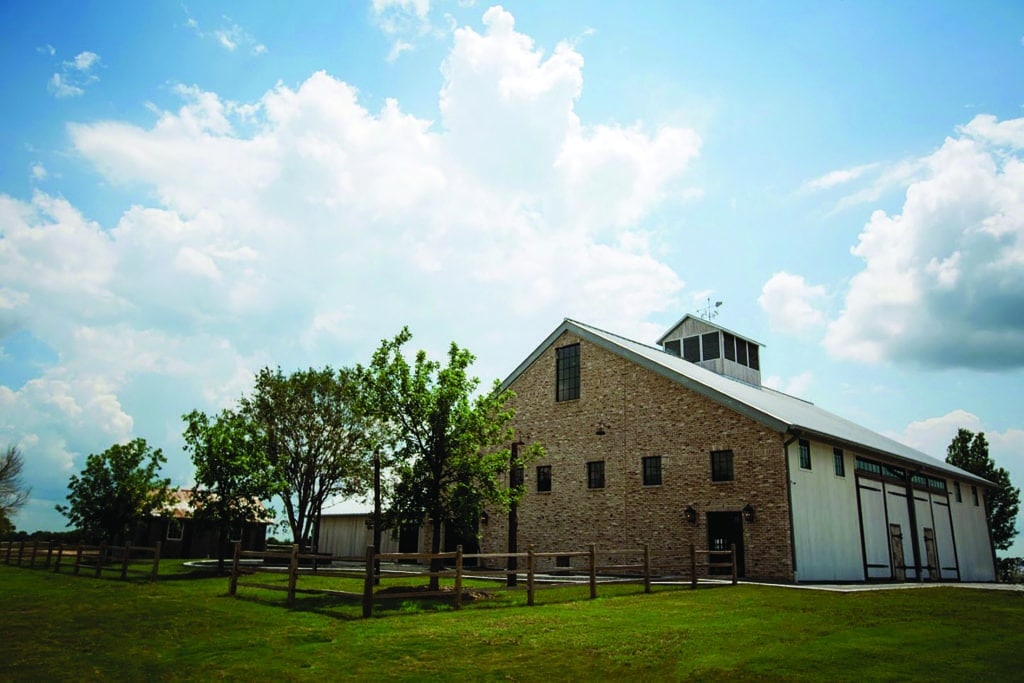
“We don’t take down barns for their parts,” Polaski said. “We dismantle, restore and then re-erect the whole structure to preserve their heritage. New owners and new purposes bring new life, so these iconic reminders of our past history continue to be part of this country’s future.
For more information about the Antique Barn Company or to see the company’s current inventory of historic structures, visit www.AntiqueBarns.net. Donald Polaski can be reached at (603) 820-5898.
 This article appears in the fall 2016 issue of LAND magazine. Visit www.landmagazines.com to read more and subscribe to future issues of both LAND magazine and TEXAS LAND magazine.
This article appears in the fall 2016 issue of LAND magazine. Visit www.landmagazines.com to read more and subscribe to future issues of both LAND magazine and TEXAS LAND magazine.
